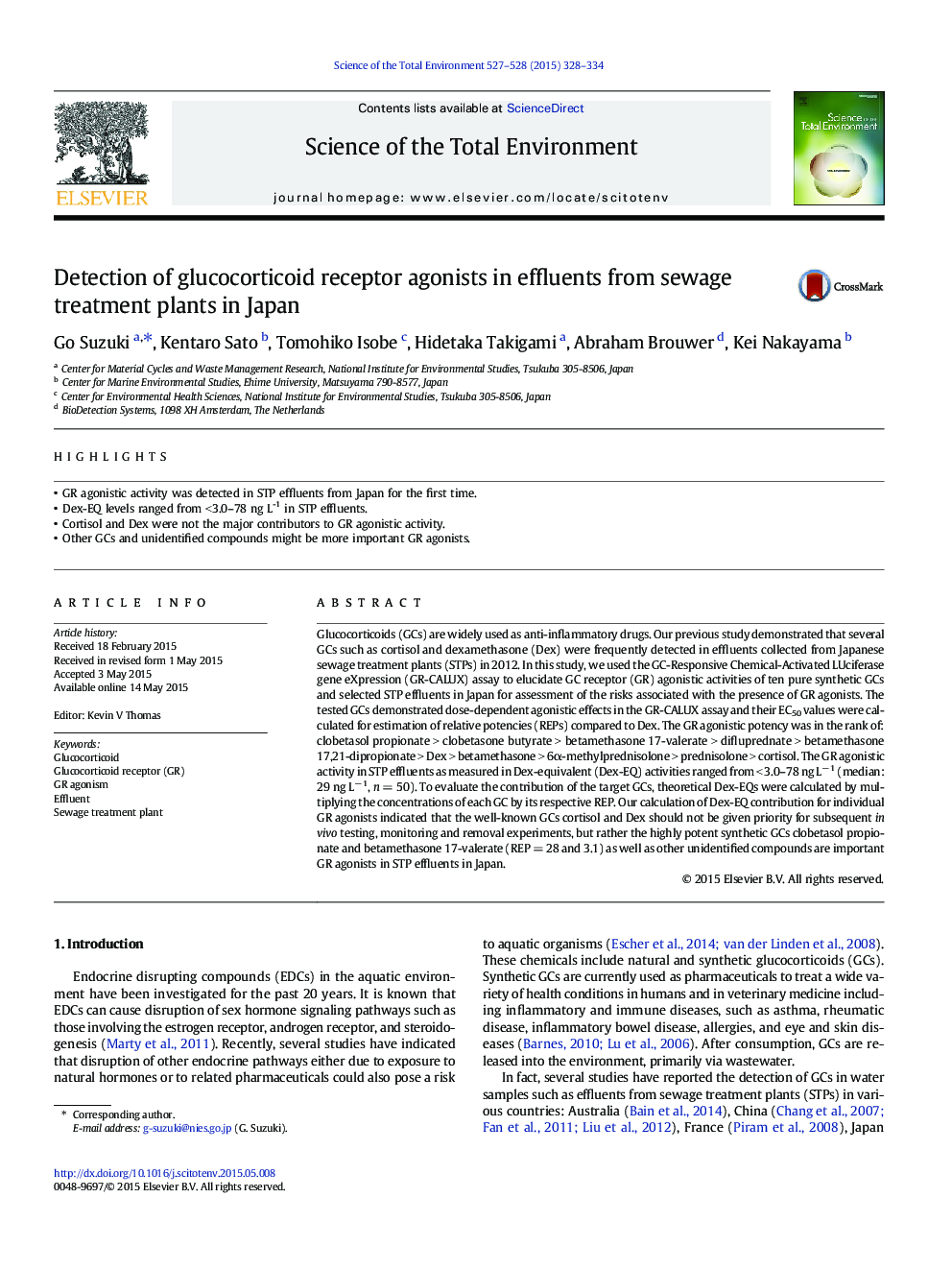| Article ID | Journal | Published Year | Pages | File Type |
|---|---|---|---|---|
| 6326486 | Science of The Total Environment | 2015 | 7 Pages |
Abstract
Glucocorticoids (GCs) are widely used as anti-inflammatory drugs. Our previous study demonstrated that several GCs such as cortisol and dexamethasone (Dex) were frequently detected in effluents collected from Japanese sewage treatment plants (STPs) in 2012. In this study, we used the GC-Responsive Chemical-Activated LUciferase gene eXpression (GR-CALUX) assay to elucidate GC receptor (GR) agonistic activities of ten pure synthetic GCs and selected STP effluents in Japan for assessment of the risks associated with the presence of GR agonists. The tested GCs demonstrated dose-dependent agonistic effects in the GR-CALUX assay and their EC50 values were calculated for estimation of relative potencies (REPs) compared to Dex. The GR agonistic potency was in the rank of: clobetasol propionate > clobetasone butyrate > betamethasone 17-valerate > difluprednate > betamethasone 17,21-dipropionate > Dex > betamethasone > 6α-methylprednisolone > prednisolone > cortisol. The GR agonistic activity in STP effluents as measured in Dex-equivalent (Dex-EQ) activities ranged from < 3.0-78 ng Lâ 1 (median: 29 ng Lâ 1, n = 50). To evaluate the contribution of the target GCs, theoretical Dex-EQs were calculated by multiplying the concentrations of each GC by its respective REP. Our calculation of Dex-EQ contribution for individual GR agonists indicated that the well-known GCs cortisol and Dex should not be given priority for subsequent in vivo testing, monitoring and removal experiments, but rather the highly potent synthetic GCs clobetasol propionate and betamethasone 17-valerate (REP = 28 and 3.1) as well as other unidentified compounds are important GR agonists in STP effluents in Japan.
Related Topics
Life Sciences
Environmental Science
Environmental Chemistry
Authors
Go Suzuki, Kentaro Sato, Tomohiko Isobe, Hidetaka Takigami, Abraham Brouwer, Kei Nakayama,
